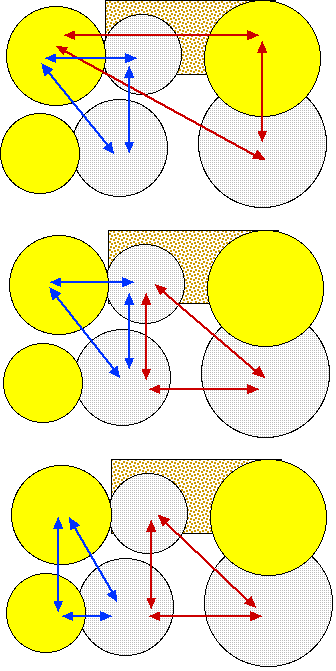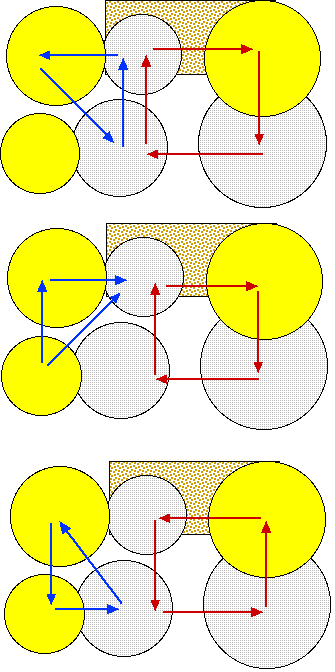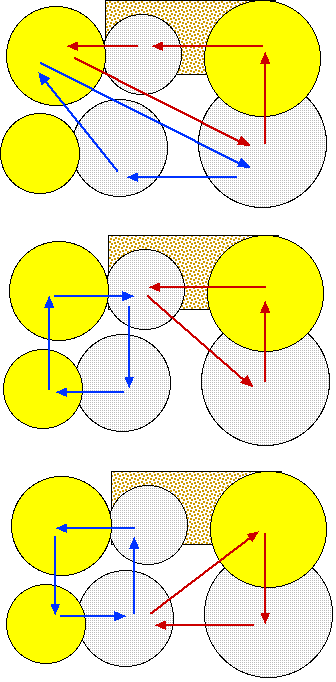Moving Drummers!
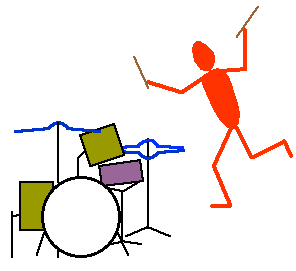
Here you'll find some very interesting patterns for movements around your drum set. The main idea here is that you're not thinking in rhythms or melodic lines, but in independent movements for both hands.
This idea itself is not new but the way I have notated it and have worked it out, I have never seen before. Look at the first three examples below. Arrows in red are to be played with the Right hand, arrows in blue are for the Left hand. You can move either hand clockwise or counter clockwise. Start with your hands playing simple alternating (R L R L . . .) and perform the movement indicated by the arrows.
Because both hands have the same number of moves (3), every circle you play sounds the same. Therefore you should vary the starting point of one hand only to get other variations with the same moves. You can think of the moves as triplets, sixteenths or whatever you like, and play the hi hat accordingly. When the hi hat is part of the moves itself (played by the left hand) this can give some very interesting effects. Your bass drum can be used to play every time one of your hands hits a cymbal.
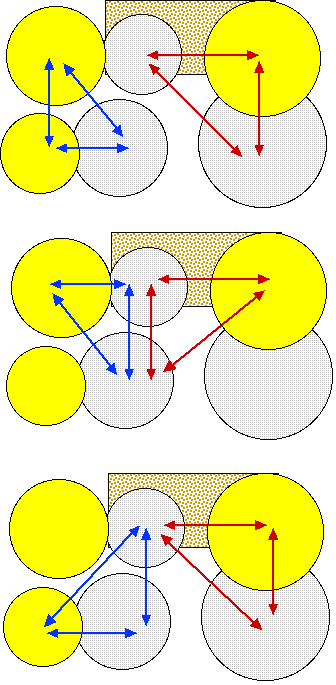
The pictures you see are a top view of a regular 3 piece set (gray circles) with 2 cymbals and hi hat (yellow). The bass drum itself is only for reference and orientation. If you keep one hand playing in a fixed direction, you can make all combinations by varying direction and starting point of the other hand.
Of course this idea can be worked out for any other setup.
Here you see movements that have been made up of three moves for each hand. But when you start to use different length moves for each hand, you'll be in for a big surprise! I guarantee you that most drummers get very confused when they try to do that for the first time, because the resulting patterns are really odd!
Especially the combination of 4 and 3 gives some nice sounding patterns on the cymbals. Don't forget to play your bass drum together with these cymbal hits (after you've find out how the pattern repeats!). You could also use different stroke patterns for your hands to play: Double strokes, Paradiddles, 5- and 7 stroke rolls and so on. Never split a double stroke on two drums! The double stroke should be played on one drum before you move in the direction as given by the arrows.
